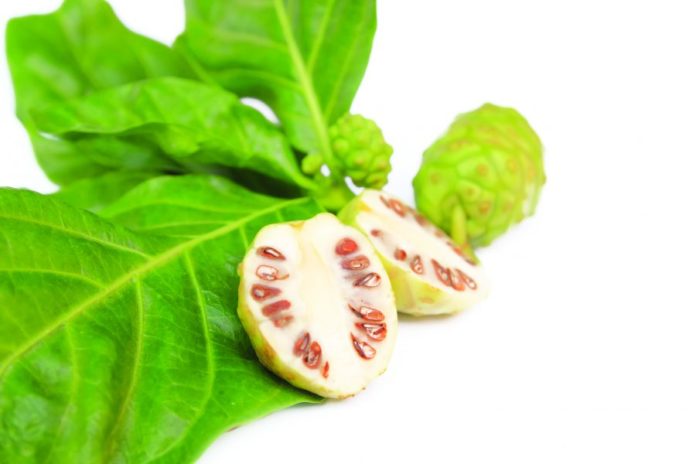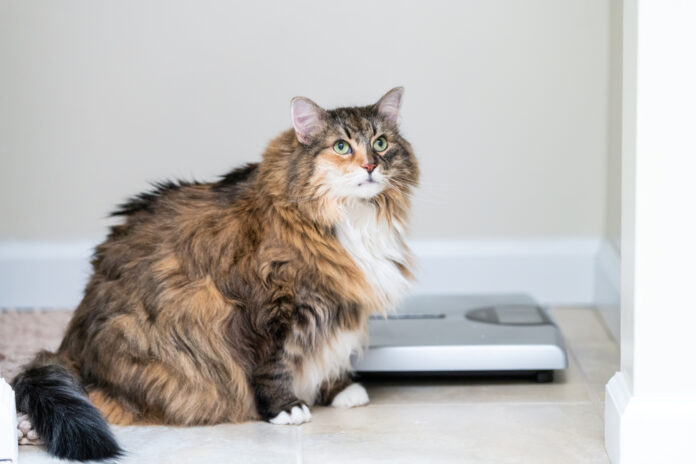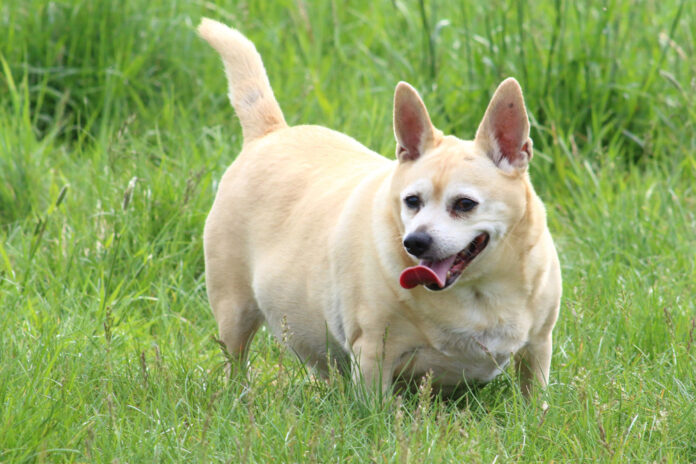Noni – a tropical fruit that’s good for dogs and cats

Noni has great potential for the treatment and possible prevention of many diseases in pets.
Noni fruit is nothing short of amazing. It’s been in use for centuries across the Pacific region, not just for food but for its health benefits as well. Noni is reported to have a broad range of therapeutic effects that can benefit dogs and cats as well as people, and it’s showing a lot of promise when it comes treating and perhaps even preventing many degenerative diseases.
What is Noni and where does it come from?
Noni is the common name for Morinda citrifolia, also called Indian mulberry, Nono or Nonu, cheese fruit, Mengkudu, Bingkudu and Nhau in various cultures. It was an important part of the diet throughout the Pacific Islands, Southeast Asia, Australia and India. In Polynesian stories, heroes and heroines used Noni to survive famine. Noni has also been used for many ailments in people, including kidney disease, diabetes, burns, broken bones, and much more.
What makes Noni so healthy?
The Noni plant contains a broad spectrum of nutrients, antioxidants, and anti-inflammatory, anti-neoplastic, anti-parasitic, tranquilizing and immune-modulating substances. Different parts of the plant have different chemical compositions.
Noni contains over 160 phytochemicals, including phenolic compounds, organic acids, and alkaloids. Researchers are also finding some additional novel compounds. The following are a few of the major components that may be responsible for Noni’s benefits:
- Xeronine – A plant alkaloid similar to the bromelain found in pineapple. It activates proteins and enzymes such as pro-collagenase and protease, which help heal damaged tissues, therefore preventing further disease. The ingestion of Noni also causes a feeling of well-being because it increases the release of endorphins from the brain.
- Scopoletin – Dilates vasculature, and is antibacterial, antifungal, anti-inflammatory, analgesic and histamine-inhibiting. It’s also a serotonin modulator.
- Anthraquinones — Antiseptic and antibacterial.
- Carotene, vitamins A and C, potassium, rutin, flavone glycosides – All these are free radical scavengers.
- Essential fatty acids – Good for skin and coat health.
- Polysaccharides – Immuno-stimulatory, immune-modulatory and anti-tumor; may play a role in Noni’s cancer-fighting benefits.
Noni can help with a range of conditions
1. Bacterial or fungal infections
Research has showed that Noni offers significant antimicrobial and antifungal activity against Pseudomonas aeruginosa, Proteus morgaii, Staphylococcus aureus, Baciilis subtilis, Escherichia coli, Salmonella, Shigela, H. pylori, A. niger, C. albicans, T. mentagrophytes and Mycobacterium tuberculosis.
It also interferes with the serum-induced morphological conversion of Candida albicans from cellular yeast into a filamentous form in vitro, and inhibits the germination of Apergillus nidulans spores.
I have successfully treated bacterial diarrhea, as well as ear and skin infections just with Noni.
2. Cancer
Noni has great potential for scavenging reactive oxygen free radicals and decreasing lipid peroxidation, thereby reducing cancer risk. It would be useful to include Noni in the daily diet of breeds susceptible to cancer, and in dogs living with heavy cigarette smokers. Unspayed geriatric female cats or dogs may benefit from daily Noni to prevent breast cancers.
Once cancer is diagnosed, Noni is a useful addition to any treatment protocol because of its synergistic properties affecting the immune system. It can be used in the treatment of mammary and lung cancers, lymphoma and liver cancers.
Several clinical studies have demonstrated Noni’s synergistic actions with chemotherapeutic drugs.
3. Pain
Noni can be used alone or in combination with other herbs such as Boswellia serrata or Cannabis for pain control in dogs and cats.
In addition, making lotions and shampoos with either fruit or leaf extracts may help clear localized skin pain (more on topical applications below).
4. Liver problems
Because Noni contains many different kinds of antioxidants, it may act synergistically when used with other antioxidants and hepatoprotective botanicals, and could prove beneficial in the treatment of liver cirrhosis, acute and chronic hepatitis, and possibly liver cancer. A just-discovered neolignan compound in Noni called Americanin has been found to be a strong free radical scavenger.
5. Parasites
While I have not used Noni to treat parasites, it has a long history of insecticide and anthelminthic use. Many ripened fruits such as Noni contain octanoic acid, which is toxic to parasites when eaten. Hunting dogs are regularly treated with Noni by Hawaiian hunters who “swear” it controls roundworms, hookworms and other parasites.
Some Hawaiians also use Noni to prevent or treat heartworms. If Noni is scientifically proven to be an effective anthelmintic, people with pets infested with heartworm, and who have limited funds or don’t want to use chemical treatments, may be able to improve the quality of life and longevity of their animals by giving them Noni on a daily basis.
Noni is also reported to act as a successful tick repellent in both people and animals.
Using Noni topically
I have used a topical 90% Noni and water lotion on cats with allergic skin reactions (to food and fleas), and have seen decreased inflammation after the third application. Licking off the lotion is also beneficial; ingested Noni facilitates the repair of skin and tissue by increasing local collagen production. When used as a regular dietary supplement, it can heal minor and often unnoticed tiny injuries.
Topical lotions made from Noni fruit or leaves can relieve pain quickly and could be added as an “enhancer” to shampoos. Noni extract could be mixed with other topical analgesics to better mollify pain.
A company in Kauai, Hawaii (Real-Noni) makes a Noni lotion by air drying a mash of fruit pulp, then pouring hot water (below 115°F) over it. When cooled, it’s mixed with purified water, lavender oil and grapefruit seed extract.
I make a Noni salve as follows:
3 large fresh Noni leaves, chopped up
1 turmeric root (the size of your thumb), grated fresh raw
½ cup coconut oil
Simmer, but don’t burn, until the mixture is a yellow/green color (not brown) — about ten to 20 minutes. Filter out all plant material and store in a wide-mouthed glass jar.
How much should you give your dog or cat?
My own dosing experience is based on unripe Noni fruit leather (Real-Noni, real-noni.com) or fermented juice, and more recently, a dried extract powder from Maui, Hawaii (Noni Maui, nonimaui.com).
Because Noni’s compounds are known to react with proteins, the herb should be taken on an empty stomach. I recommend the following dosing schedules using fruit leather and fermented juice – however, as always, it’s best consult with a holistic or integrative veterinarian before giving your individual dog or cat any new herb or supplement.
Fruit leather: 1” by 1” square piece = 750 mg
- Tiny dogs, and cats 750 mg divided over two doses
- Medium dogs (20 lbs to 35 lbs) 1,500 mg per day
- Large dogs (50 lbs to 90 lbs) 3,000 mg per day
- Giant breeds 4,500mg to 6,000 mg per day
Fermented juice
- Tiny dogs, and cats 5 ml bid
- Medium dogs 10 ml to 15 ml bid
- Large dogs 30 ml bid
- Giant breeds 60 ml bid
Noni products
The quality of a Noni product and its nutritional components is directly related to how and where the plant is grown. Concentrations of active constituents rely heavily on the quality of the soil, water, and the geographical location, terrain and the weather. In general, plants growing in their undisturbed natural environments (“in the wild”) have a higher concentration of nutrients and phytochemicals than those grown on plantations. Weather changes such as drought can adversely affect the nutrient concentration in the plants.
Noni is commercially available in the following forms:
- Fermented or unfermented fruit juice mixed with other fruit juices
- Fermented (traditional ) ripe fruit
- Juice extract from unripe fruit
- Powdered capsules of unripe fruit
- Leather made from unripe fruit
There is some controversy among manufacturers over the best way to process Noni to retain its medicinal properties. It’s believed by some that processes using high heat or fermentation may destroy the enzymes and bioactive ingredients, while mixing this fruit with others may form unwanted compounds.
More research on all forms of Noni is needed to address these concerns.
In my opinion, Noni is safe, and has a lot of potential for treating and even possibly preventing many diseases in dogs and cats, including cancer, parasites, allergies and more.




